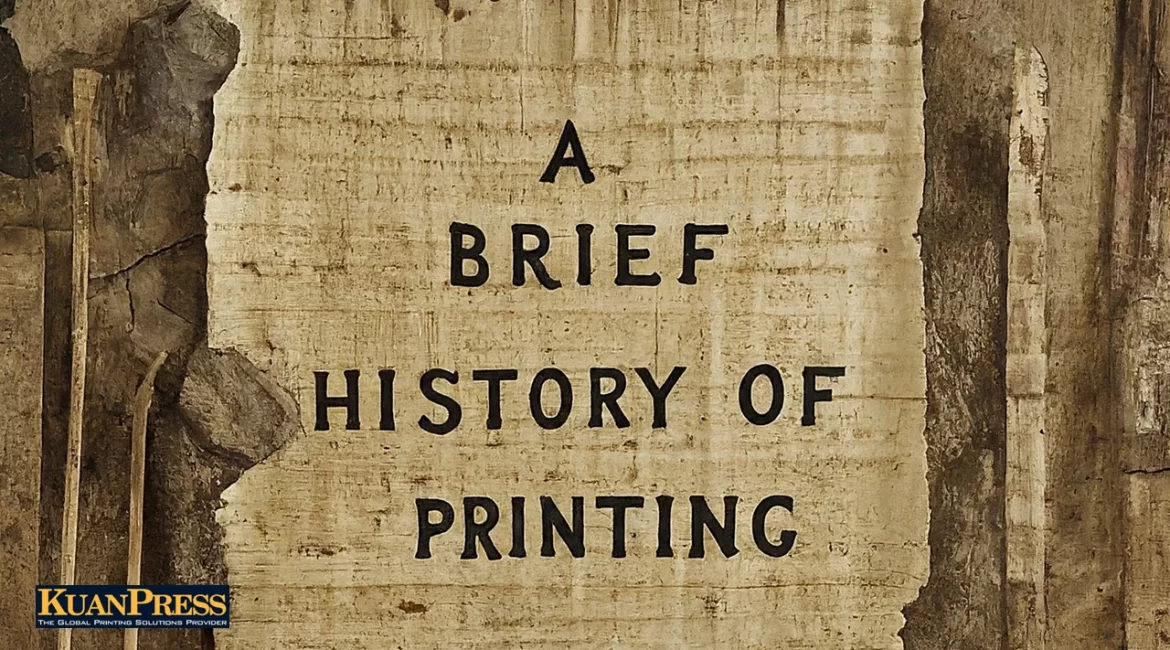The ability to reproduce information has been a cornerstone of human progress, shaping the way we share knowledge, stories, and ideas. From the humble beginnings of etching symbols on clay tablets to the colourful images and texts on modern magazines, printing has undergone a remarkable transformation.
This journey, spanning across millennia, has witnessed groundbreaking inventions like the printing press, which helps revolutionize communication and forever alter the course of history. Prepare to join us on a walk through time, where we explore the evolution of printing, from the ancient world of etching to the digitally printed landscapes of our modern age.
Early Beginnings (3,000 BC - 1440 AD):
Long before there is a printing press, civilizations across the globe devised methods to capture and share information. What stands in their way is the limitations of available writing materials. However, ingenuity prevailed. Civilizations across the globe developed various methods to overcome these limitations.
The Egyptians created papyrus from the papyrus plant, while the Sumerians used clay tablets etched with cuneiform script. Meanwhile, other cultures employed parchment, crafted from animal skins, for its durability. While these methods were laborious and limited in production, they laid the groundwork for the revolutionary concept of block printing.
This technique, involving carved wooden blocks pressed onto surfaces, allowed for the replication of images and text, primarily used for religious purposes and decorative textiles. Although not yet capable of the mass production of the printing press, block printing marked a significant step forward, paving the way for a more efficient and widespread printing future.
The Gutenberg Revolution (1440 AD - 1454 AD):
In 1440 AD, Johannes Gutenberg’s revolutionary printing press ushered in a transformative era. Unlike the static blocks used previously, his idea was to lay in movable type, individual, reusable metal letters that allowed for rapid text assembly, enabling mass production of printed materials. This innovation surpassed the limitations of carving entire blocks, fostering an era of unprecedented book and pamphlet creation.
In 1454 AD, the printing press was put into commercial use. Knowledge and ideas, previously confined to a select few, became accessible to a wider audience, fueling the spread of information at an unprecedented pace. This democratization of information laid the groundwork for significant advancements in various fields and contributed to the dawn of the Renaissance and other historical turning points.
The Age of Innovation (1454 AD - 19th Century):
Following Gutenberg’s groundbreaking invention, the subsequent centuries witnessed a vibrant “Age of Innovation” in the printing world. Printing presses evolved to cater to diverse needs – churning out newspapers to keep the public informed, and pamphlets for political campaigns and social movements.
This era also saw the birth of groundbreaking techniques like lithography, which allowed for intricate image reproduction, and the development of color printing, adding a new dimension to visual communication. The impact of these advancements reverberated through society, revolutionizing education by making learning materials more accessible. Political discourse was transformed as printed materials facilitated the spread of ideas and fueled public debates. Information sharing, previously restricted by the limitations of earlier methods, flourished, fostering a more informed and engaged citizenry.
This era of rapid printing innovation not only cemented the role of print as a powerful tool for communication but also laid the foundation for the continued evolution of the industry in the centuries to come.
The 20th Century and Beyond (1900 AD - Present):
The 20th century ushered in a new era with the rise of offset printing, offering high-quality, cost-effective mass production. This innovation transformed the printing landscape, enabling the creation of vibrant magazines, posters, and packaging materials previously unseen. However, the turn of the millennium brought a digital revolution.
The emergence of digital print presented both challenges and opportunities. While electronic communication and self-publishing platforms posed competition, it also opened doors for personalized and on-demand printing. The future of printing hinges on its ability to adapt and embrace these advancements. By integrating with digital technologies and exploring innovative applications, printing can remain a relevant and valuable tool for communication, education, and artistic expression, leaving its mark on the ever-evolving landscape of information production.
Whats in the Future for Printing?
Our walk through the history of printing has showcased a tale of innovation and adaptation. From the etchings on clay tablets to the complicated yet fascinating details of the modern printed pages, this have highlighted the relentless human desire to capture and share knowledge. We witnessed the transformation of the printing press, the diverse applications that emerged during the “Age of Innovation,” and the continued evolution of the printing industry in the face of the digital revolution.
While digital media dominates the current information landscape, the unique appeal of printed materials persists. The tactile feedback of a book, the visual appeal of a well designed magazine, and the value of historical documents all speak to the irreplaceable role of physically printed materials in our lives.
As we move towards the future, printing is brimming with possibilities. From personalized and interactive experiences to the integration of sustainable practices, the industry continues to adapt and innovate, ensuring its relevance in the continuously evolving landscape of communication.
So, while the story of printing has taken us from symbols on clay tablets to the colourful images and texts on modern magazines, the next chapter is yet to be written. One thing we are sure of, it promises to be as captivating and transformative as the one that came before.

